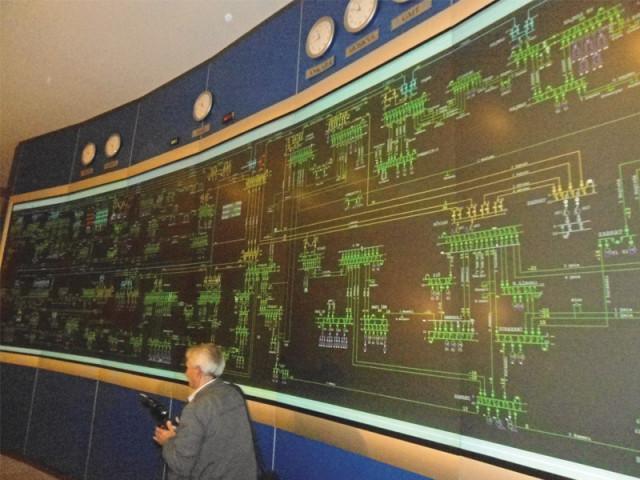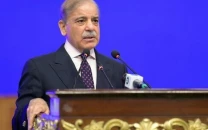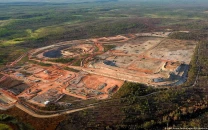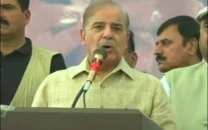Turnaround: Azerbaijan’s ‘electrifying’ experience
Pakistan can learn from the energy-surplus country that had no power a decade ago.

A view of the control room of AzerEnerji from where the authorities monitor country’s electricity network and distribution of power. PHOTO: UMER NANGIANA/EXPRESS
Azerbaijan’s capital inherited 12 power plants from the former Soviet Union, but only three were operational. The oil-rich country of the Caucasus went through its worst energy crisis then and was heavily dependent on its neighbours who milked Baku’s energy needs.
But 10 years on – in a twist of fate – Azerbaijan is now exporting electricity to the same neighbours, including Russia. Moreover, it has paid off all its debt worth millions of dollars.
Interestingly, it was Azerbaijan’s planning and keenness, rather than its oil riches that helped the country achieve the impossible. “We borrowed money from the world’s development banks and we built power plants. But we never let even a single penny go to waste,” Vice President of AzerEnerji, Marlen A. Askerov, told The Express Tribune in an exclusive interview.
AzerEnerji is the state-owned power development and distribution company and is one of the top profit-making enterprises of Azerbaijan.

If a country in comparatively worst economic conditions could get over its energy crisis, why cannot Pakistan? What is needed is energy efficiency and cutting losses.
Azerbaijan’s energy giant raised its recovery rate
from a meagre 12 per cent to 100 per cent in 10 years. It also minimised line losses to less than five per cent. In a recent development, AzerEnerji under Askerov’s leadership built five power plants in only 17 months, each with the production capacity of 550 MW.
To achieve all this, Azerbaijan put in place a network of fibre optic cable supplemented with prepaid electricity meters on all its electricity lines. It requires only five people to monitor the computerised integrated network that works on auto.
Sitting in a control room, these five people have the entire electricity network of the country in front of them on a giant monitor. From electricity production in power plants to utilisation by sub-stations, the monitoring desk can see everything and repair any faults occurring in the course of production, distribution and consumption.
“For instance, if the need for electricity at a certain sub-station is 100 MW, it would send a message for the need of that amount of energy to the power plant through the fibre cable. The plant would produce exactly 100 and not a megawatt more,” said Askerov.
Siemens, a German engineering and electronics company, was given the project of laying the fibre cable network. Between 2006 and 2010, the company managed to cover an area of 1,000 kilometres with electricity lines. “By the end of this year, we aim at completing 3,000 km,” said the AzerEnerji deputy chief.
The company installed prepaid meters at houses. “With prepaid, you get electricity only when you pay bills,” said Askerov. Also, if anyone attempts to steal electricity, the network immediately detects it, besides giving the thief a high voltage shock.
After initially importing the special cable and prepaid meters for three years, AzerEnerji is now locally producing these products.
Starting from scratch
“People did not dare to step out at night in Baku 10 years ago because we had no electricity,” said AzerEnerji’s Economic and Finance Adviser Dr Majid R Aliyev. In 1995, almost half of the population of the country was living below poverty line. Plagued with separatist movements and a civil war-like situation, the country began its independent journey in 1991 with no money and no energy.
The country shut down its power plants that were fast becoming obsolete. Its heavy industry was almost gone. “We sold the fuel we saved from these power plants to purchase electricity from Turkey, Iran and Russia,” said Askerov.
In 1998, the then president Haider Aliyev devised a plan for building power plants. Azerbaijan secured loans from different institutions that came with conditions and started erecting small plants.
In 2002, the country began work on larger plants. Simultaneously, it began replacing its redundant electricity network. “It not only created thousands of jobs, it encouraged the industry to grow,” said Askerov.
From 2006 onwards, Azerbaijan started producing electricity well in excess of its needs. Today, it is generating 30 percent more electricity that is needed and the surplus is exported to Iran, Turkey, Georgia and some parts of Russia.
Offering help to Pakistan
Askerov said AzerEnerji was ready to help Pakistan overcome its energy crisis with whatever assistance possible. “We do not have much experience with hydropower plants but we can offer our expertise on building thermal plants to Pakistan,” he offered.
Pakistan needs to send its experts to Azerbaijan to see the system first and then ascertain the benefits it could gain from AzerEnerji, said the advisor. But the initiative needs to be taken by Pakistan.
Published in The Express Tribune, October 14th, 2013.



















COMMENTS
Comments are moderated and generally will be posted if they are on-topic and not abusive.
For more information, please see our Comments FAQ